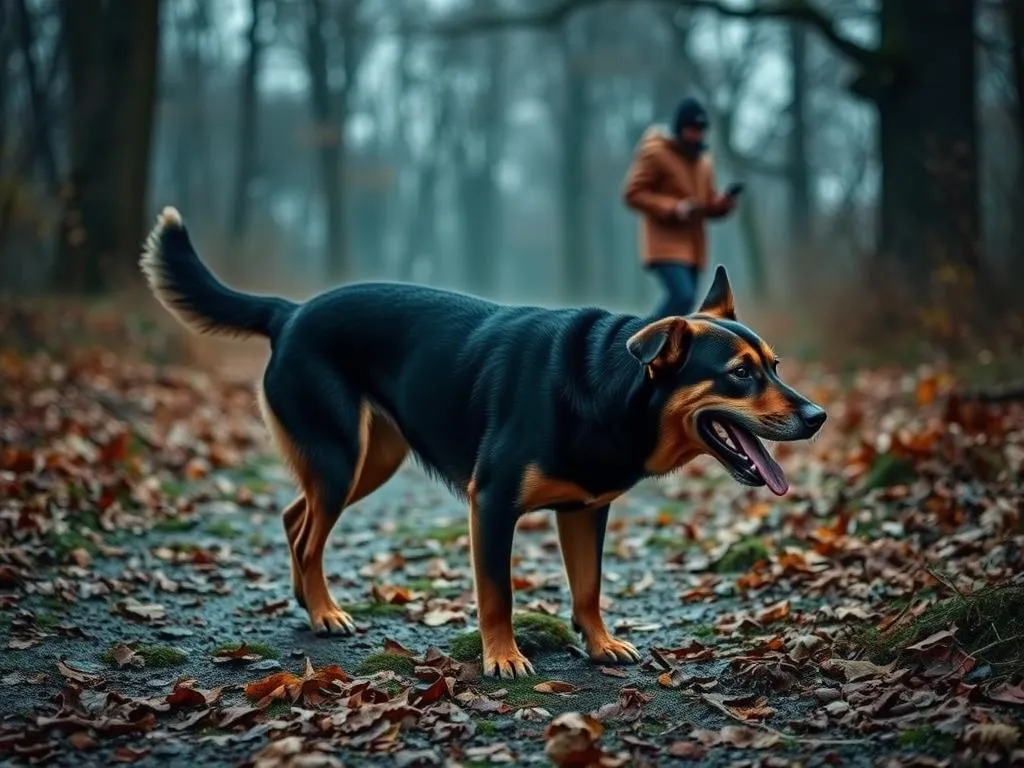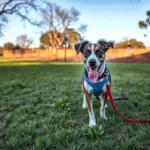
Walking with your dog can be one of the most enjoyable activities, offering both exercise and bonding time. However, the presence of aggressive dogs can turn this peaceful experience into a frightening encounter. Understanding how to scare aggressive dogs away when you are out walking is essential for your safety and peace of mind.
Understanding Aggressive Dog Behavior
Definition of Aggression in Dogs
Aggression in dogs can manifest in various forms, and understanding these is crucial for effective management. Aggressive behavior is often categorized into several types:
- Fear-based Aggression: This occurs when a dog feels threatened and reacts defensively.
- Territorial Aggression: Dogs may display aggression to protect their home or a specific area.
- Protective Aggression: This type involves dogs acting aggressively to protect their owners or family members.
Signs of Aggressive Behavior
Knowing the signs of aggressive behavior can help you react appropriately. Look for these body language cues:
- Growling: A clear warning sign that a dog feels threatened.
- Baring Teeth: This is a direct signal of aggression.
- Stiff Posture: A dog standing rigidly indicates that it is on high alert.
Vocalizations also play a role. Barking may signify agitation, while snarling often indicates a readiness to attack.
Common Triggers for Aggression
Understanding what triggers aggression can help you avoid potential confrontations. Common triggers include:
- Environmental Factors: Strangers, loud noises, or unfamiliar animals can provoke aggressive reactions.
- Owner Behavior: Leash tension or yelling can exacerbate a dog’s fear or aggression.
Preparing for Your Walk
Choosing the Right Time and Place
Being strategic about when and where you walk can significantly reduce your chances of an encounter with aggressive dogs. Consider these tips:
- Best Times for Walking: Avoid early mornings and late evenings when fewer people are around. Instead, opt for mid-morning or late afternoon when the streets are more populated.
- Safe Routes: Stick to well-populated areas and local parks where dog owners are more likely to be responsible.
Essential Gear to Bring
Having the right gear can make a big difference in your safety. Here are some essentials to consider:
- Dog Deterrent Spray: A non-lethal deterrent can help fend off aggressive dogs.
- Noisemakers: Items like whistles or air horns can create a distraction.
- Sturdy Walking Stick or Umbrella: These can serve both as a walking aid and a barrier between you and an aggressive dog.
Personal Safety Measures
Taking personal safety measures can also enhance your security during walks:
- Walking with a Partner: Having someone else with you can deter aggressive encounters.
- Carrying a Phone: Ensure that you have a charged phone for emergencies.
Strategies to Scare Aggressive Dogs Away
Making Yourself Appear Larger
When confronted by an aggressive dog, one effective technique is to make yourself look larger:
- Using Clothing and Gear: Wear a jacket that can be puffed up or use a backpack to create a bigger profile.
- Techniques to Stand Tall and Confident: Maintain a strong stance; avoid slouching or appearing submissive.
Creating Distractions
Distraction can be a powerful tool in redirecting a dog’s attention:
- Using Noisemakers Effectively: A loud noise can startle a dog, giving you a chance to escape.
- Tossing Treats or Objects: If safe, throwing treats or a stick in the opposite direction can divert the dog’s focus.
Using Deterrent Sprays
Deterrent sprays come in various forms, including:
- Citronella Spray: This spray is designed to deter dogs without causing harm.
- Dog Pepper Spray: A more potent option, but use cautiously and only as a last resort.
Application Instructions and Safety Tips: Always read the instructions carefully and aim for the dog’s face to create a distraction. Remember to keep the spray at a safe distance.
Body Language Techniques
Your body language can significantly influence an aggressive dog’s behavior:
- Maintaining Calm and Assertive Posture: Stand tall and don’t show fear. Dogs can sense anxiety.
- Avoiding Eye Contact: Staring directly at a dog can be perceived as a challenge.
Verbal Commands and Sounds
Using your voice effectively can deter aggressive dogs:
- Using Authoritative Commands: Commands like “Go home!” can be powerful.
- Making Loud, Sudden Noises: Shouting or making unexpected noises can startle the dog, providing you with an escape route.
What to Do If Confronted
Assessing the Situation
When faced with an aggressive dog, your first step is to assess the situation:
- Determining if the Dog is Truly Aggressive or Just Curious: A dog that is simply curious may not require the same response as one that is showing clear signs of aggression.
Avoiding Direct Confrontation
If a dog approaches you aggressively, avoid confrontation:
- Backing Away Slowly: Do not run. Instead, back away slowly while keeping your body facing the dog.
- Finding Barriers: Look for objects like cars or fences that you can put between yourself and the dog.
Using Your Gear
Know how and when to use your gear in a confrontation:
- How and When to Deploy Deterrent Sprays or Noisemakers: If the situation escalates, be prepared to use your deterrent spray or noisemaker.
- Importance of Staying Calm: Panic can exacerbate the situation; remain composed as you handle the encounter.
After the Encounter
Reviewing the Situation
Once you’re safe, take time to reflect on the encounter:
- Reflecting on What Worked and What Didn’t: Analyze your response and consider what you might do differently next time.
- Keeping a Journal of Encounters: Documenting encounters can help identify patterns and triggers for aggressive dogs.
Reporting Aggressive Dogs
If you encounter an aggressive dog, reporting it can aid community safety:
- When and How to Report to Local Authorities: If you feel threatened or if the dog poses a danger to others, report it to local animal control.
- Importance of Community Awareness and Safety: Sharing your encounters can help others avoid similar situations.
Preventive Measures for Future Walks
Training Your Dog
A well-trained dog is less likely to provoke aggressive encounters:
- Importance of Socialization and Obedience Training: Regular training sessions can help your dog respond better in various situations.
- Recommended Training Programs or Classes: Look for local classes focusing on socialization and obedience.
Community Engagement
Engaging with your community can foster a safer walking environment:
- Building Awareness About Aggressive Dogs in the Neighborhood: Share information about aggressive dogs with neighbors to enhance community safety.
- Joining Local Walking or Dog Groups for Support: Connecting with others can provide valuable tips and support.
Conclusion
Navigating the challenges of encountering aggressive dogs while walking requires knowledge, preparation, and confidence. By understanding dog behavior and employing various strategies, you can ensure a safer and more enjoyable walking experience. Always remember to stay calm and assertive, utilize your gear effectively, and engage with your community to foster awareness. With these tools at your disposal, you can walk your dog with peace of mind, ready to face any challenge that comes your way.









